‘The Twins’: Creating a Resource for Research, by Kate Noble and Lucy Shipp
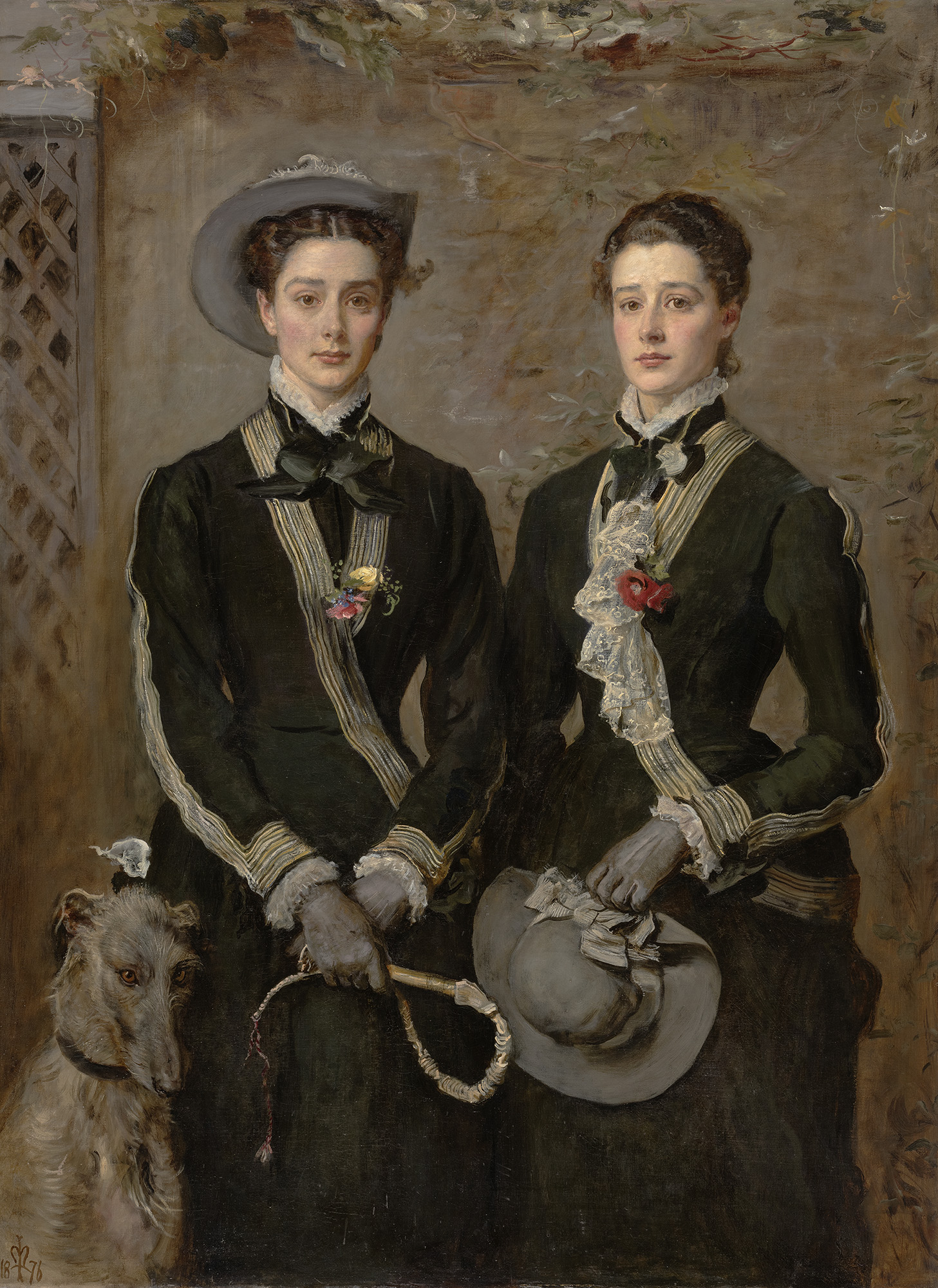
'The Twins' (portrait of Kate and Grace Hoare) by John Everett Millais (1829-96), oil on canvas, 1876. The Fitzwilliam Museum, Cambridge
In 2016 we were very fortunate to be awarded funding from the Understanding British Portraits Professional Partnership Fellowship to research The Twins by John Everett Millais and create a learning resource for young people. We hoped that our project would help to reveal more about the role of women in the Victorian age, whose stories have for many years only been told in relation to the important men around them. This blog post describes how we used our findings to create a digital resource to support A-Level students to develop their research skills and learn how to look at collections.
Background to the Project
The Twins is one of the most popular paintings in The Fitzwilliam Museum and many thousands of visitors enjoy looking at it and talking about it every year. There are several other paintings in the museum by Millais, and his life and works have been extensively researched and documented. In contrast to this, when we started the project we didn’t know anything about the female sitters other than their names. We were interested in finding out more about them: who they were and what happened to them after the painting was made. We then planned to use our own research journey as inspiration for young people embarking on their own research projects.
What We Found Out
Our research connected us with living relatives in New Zealand and Fuji, enabling us to trace the paths of Kate and Grace, the sitters’, lives. Our most exciting find was Kate Gough’s extraordinary album of photo-collage at the V&A in London (below). You can find out more about what we discovered in the online resource we created.
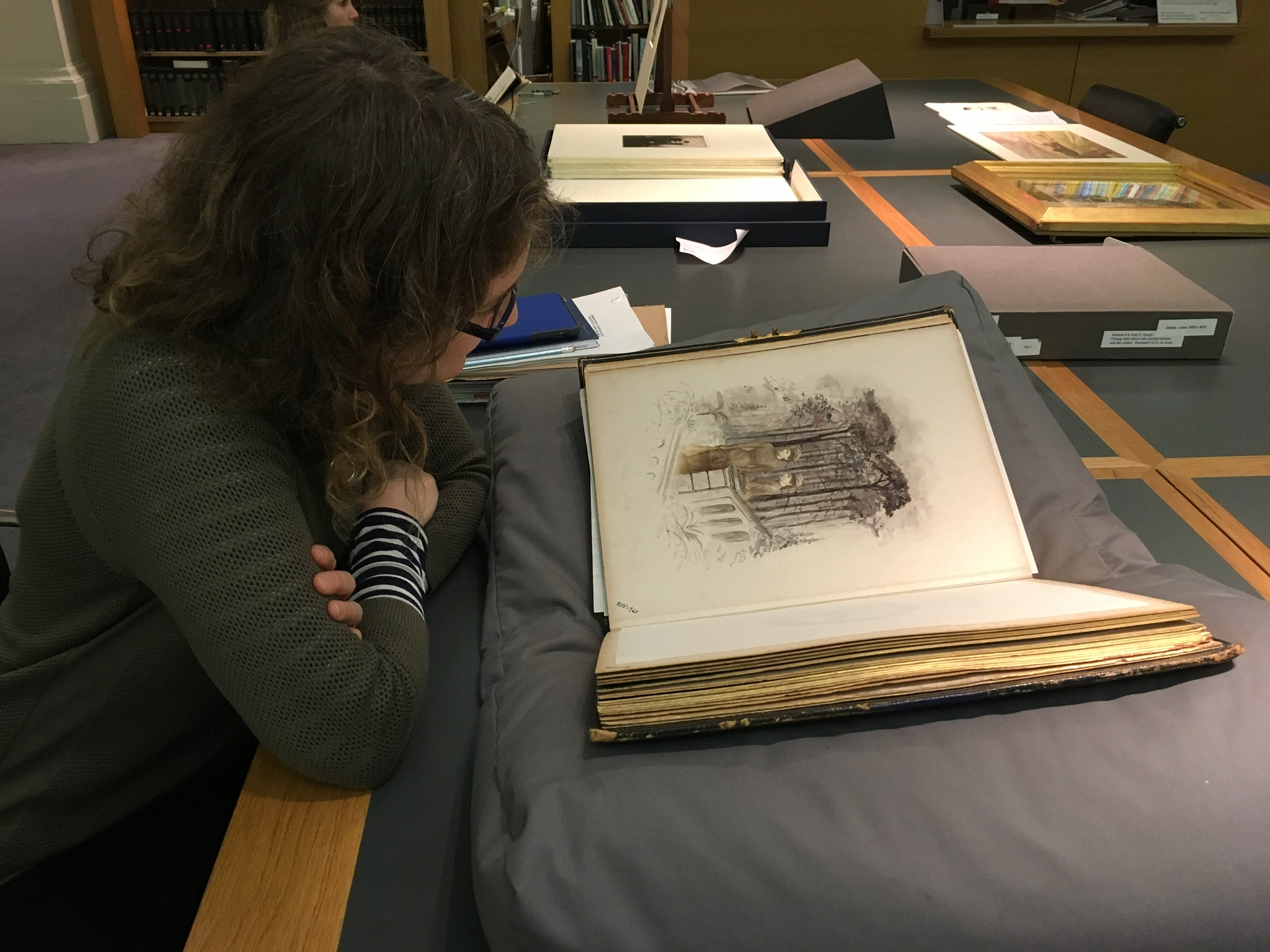
Kate Noble with Kate Gough’s photo-collage album in the V&A Museum
How we Created the Digital Resource using a ‘Design Thinking’ Approach
We worked with Ina Pruegel, the University of Cambridge Museums Digital Engagement Specialist, to use a design thinking approach to creating our digital resource. The project built on our experience of ‘design thinking’ on a previous research project with Marco Mason from University of Leicester. We went through the following steps:
Stage 1
In our first meeting we brought together a multidisciplinary team of UCM colleagues from learning, marketing, IT, the image library and curatorial to define the audience for the resource and work out what our key messages might be.
Stage 2
For the second meeting the group worked together to understand more about the audience and how we might make the resource relevant and accessible, considering whether students would access the resource independently through social media channels and apps, or whether it would be shared through schools and colleges. Each member of the group undertook independent research into a variety of digital resources that are used by a variety of audiences, and used that as a starting point to generate ideas for your intended audience.
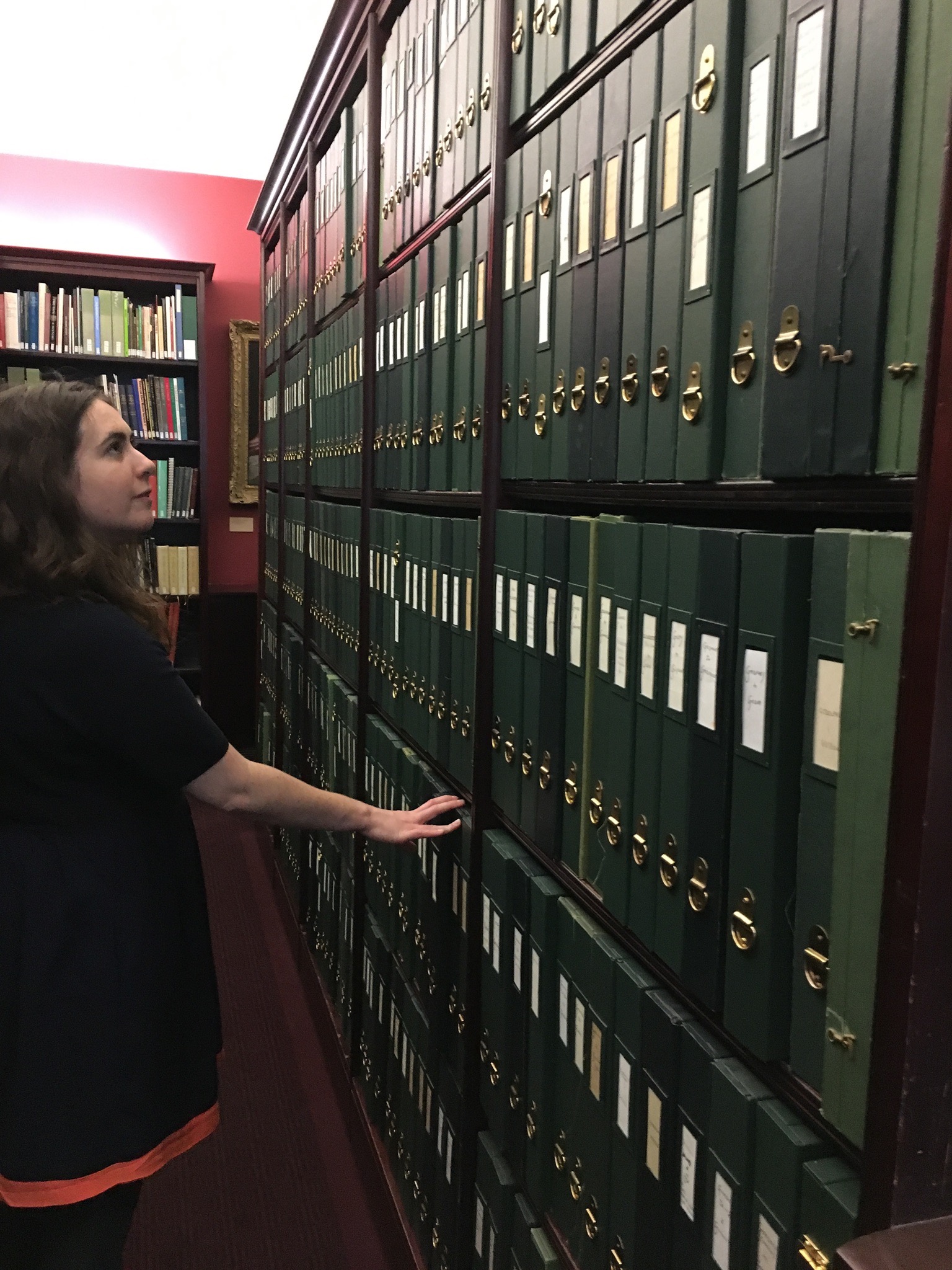
Lucy Shipp at the National Portrait Gallery’s Heinz Archive and Library
Stages 3 and 4
This was the really fun bit! We worked in groups to build paper prototypes for the resource based on our conversations and ideas. We reviewed the different prototypes, balancing ideas and audience engagement with the practicalities of use within schools, and came up with two final prototypes.
Stage 5
The next step was to test and evaluate each of these prototypes with a group of A-Level teachers to help us to create a design brief. The feedback was valuable to ensure that the resource we were creating were relevant and useful to the students and teachers.
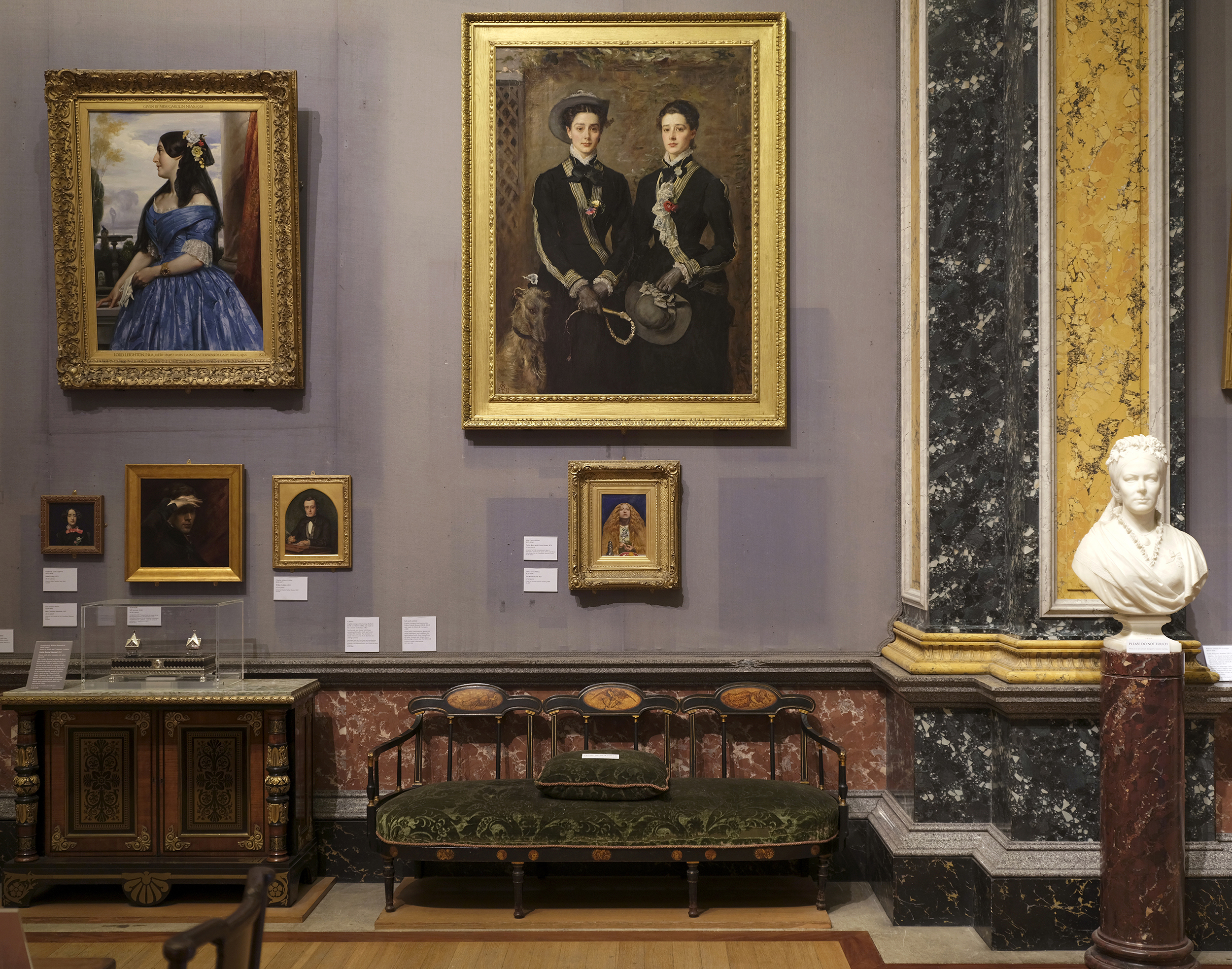
‘The Twins’ (portrait of Kate and Grace Hoare) by John Everett Millais (1829-96), oil on canvas, 1876. The Fitzwiliam Museum, Cambridge
Stage 6
Once we had recruited a web designer we then returned to stage 4 to build a digital version of our original prototype incorporating feedback from Stage 5. We then joined the designers to share the digital prototype to gather further feedback on functionality. Following the teacher feedback we made changes to the site and repeated the process of designing and testing and making.
Stage 7
We continued to consult with UCM colleagues in marketing, IT, the image library and curatorial to feed into the final resource, to share progress and see how initial ideas had developed. It was important to ensure that it met the needs of the audience, A-level students and teachers, and that it could be hosted properly on the museums website.
We are now very excited to be able to share the resource with teachers and colleagues and look forward to receiving feedback from them. The project helped us to think about how we can share the research that takes place across the UCM, and highlight the process to young people interested in embarking on an investigation of their own. We have started work on three more projects to add to the site.
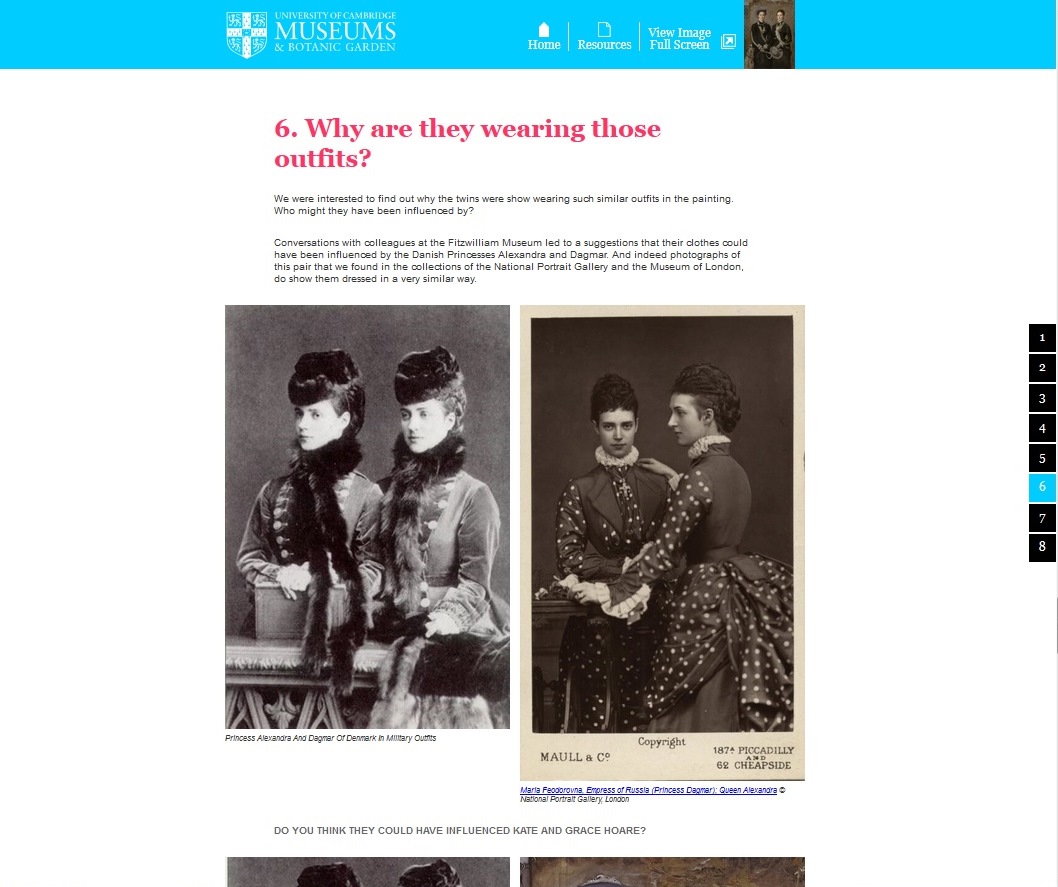
Click the image to visit ‘The Twins: Looking at Collections: A How to Guide for Researchers’ resource

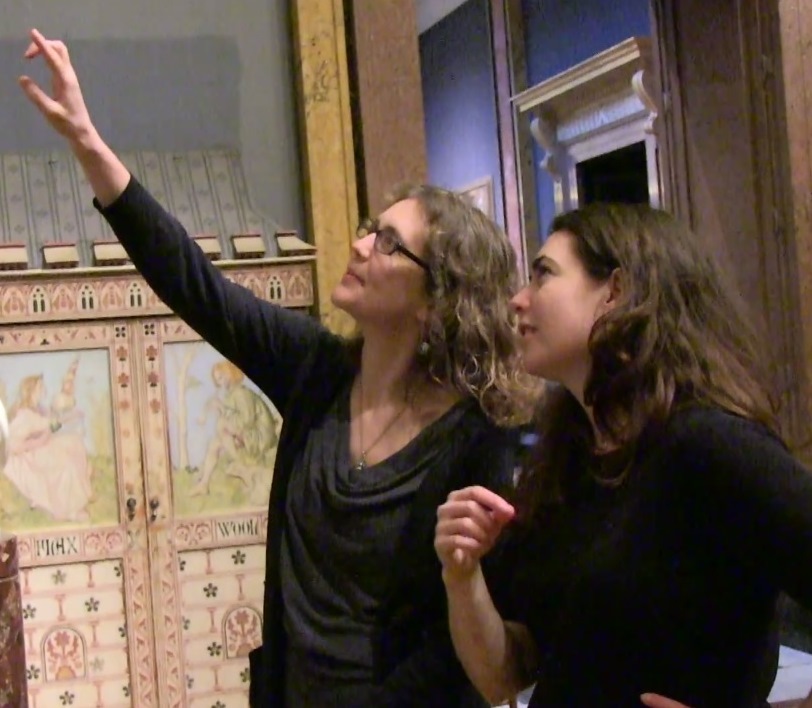

Comments
Hullo – I live in Tennessee U.S.A. and Kate Hoare was my great great great grandmother. When I was just a little girl, I used to look up at the painting which hung on the wall of my grandmother and grandfather’s home in Byfleet, England. I was fascinated by the dog, and my grandfather would always say, “Just look Angela, but don’t touch.” Now I understand why. My father was the late Clive Richardson, who passed in l998, his mother Nora Richardson was the great grand-daughter of Kate, on the left of the painting.
Best to you all, just thught you’d be interested in hearing from me, and yes! – it is a marvellous work of art.
sincerely
Angela Richardson vonMizener.
Hello Angela,
I am working on a project concerning Kate Edith Hoare and her twin sister Grace Maude Hoare. I have been working on the family history of the twins and the history of the remarkable painting by John Everett Millais which was painted in 1875. I realise that there were a few inaccuracies in your comment and thought I would point them out. Your grandmother was Nora Eardley Wilmot/Richardson and her mother was Grace Maude Hoare/ Eardley Wilmot. You are descended from the other twin Grace and not Kate who I believe was childless. Grace in the painting was in fact your great grandmother. I would be very grateful if you could give me any information on the history of the painting. It now sits proudly on the wall at the Fitzwilliam Museum in Cambridge to be admired by many of their thousands of visitors, My email address is [email protected]
Many thanks
David